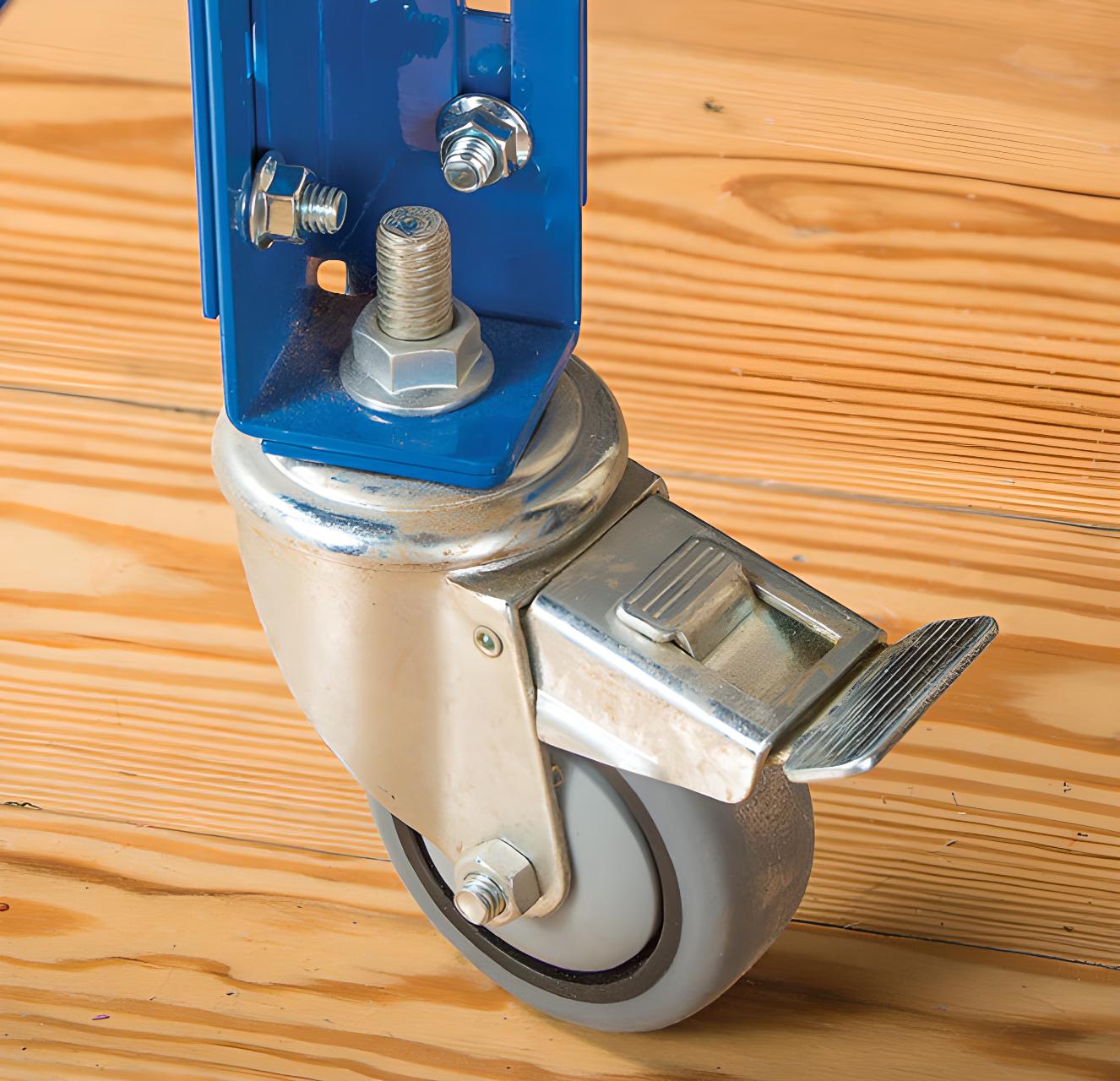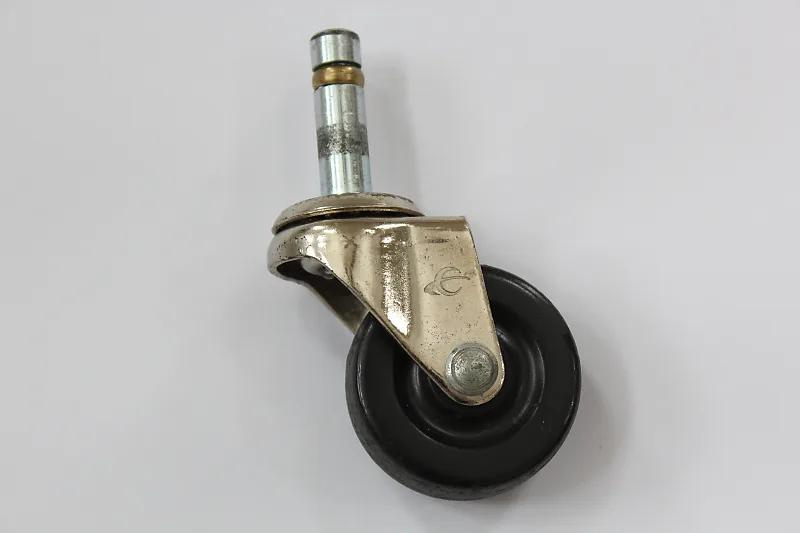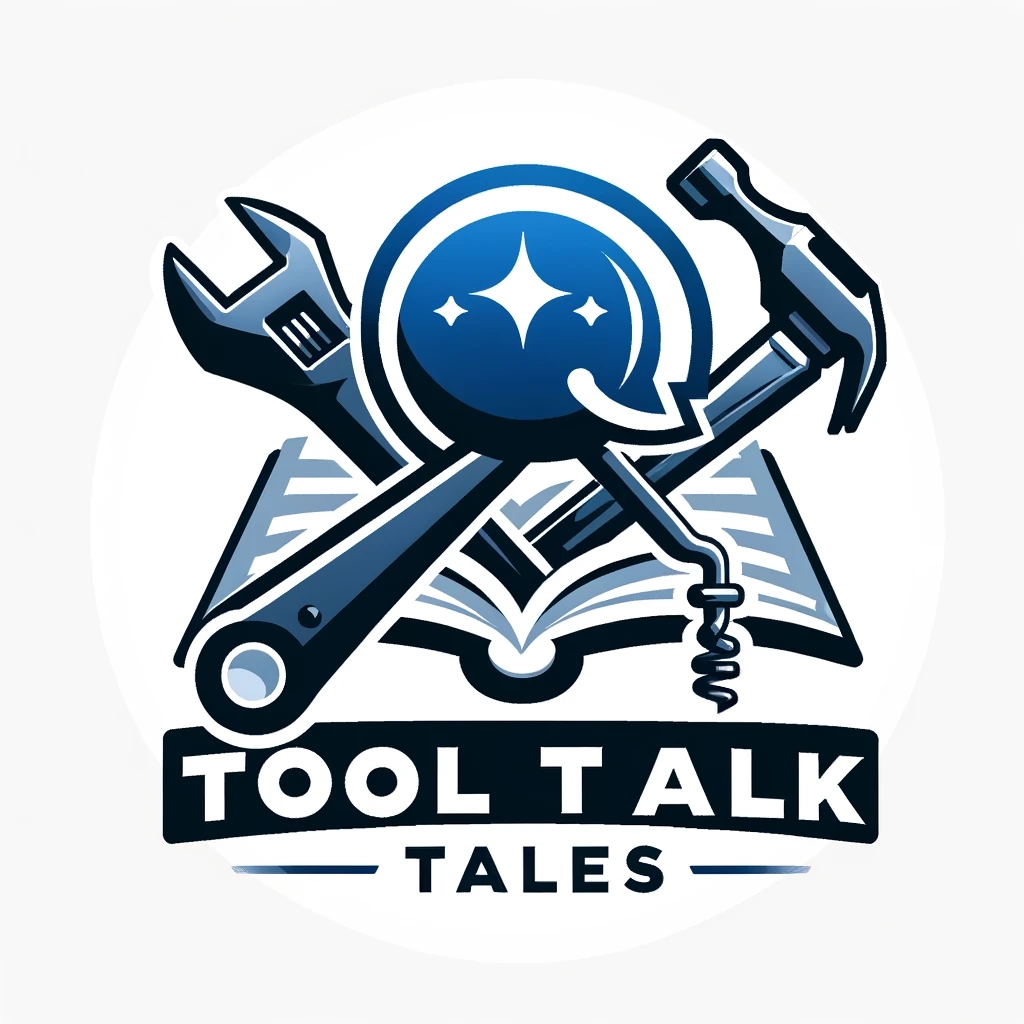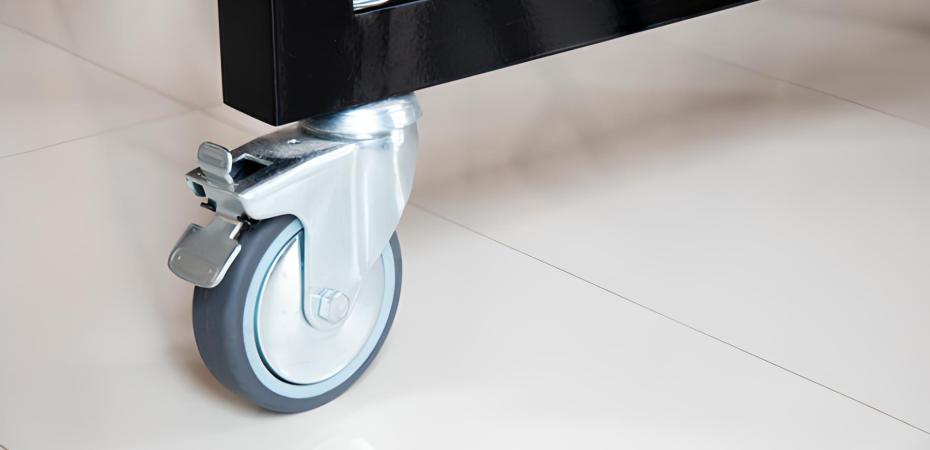The world of handling equipment hasn’t always been powered as is the case with many moving platforms nowadays. In hopes of making manual handling equipment more reliable caster wheels were implemented in the design of trolleys since the late 30s.
Casters or castor wheels are free-rolling components that allow you to push and pull any mobile platform no matter the amount of weight it can bear. Casters are quite reliable since they have a straightforward design and one that has been in use for many decades. Casters may not be the most advanced set of wheels you’ll get on a moving platform but they are quite versatile.
Bolt Hole vs Plate Fitting Castors

There are two main types of casters when it comes to their mounting hardware, plate-fitting and bolt hole casters. Plate-fitting casters come with a built-in plate that attaches to a platform with 4 bolts. However, castor wheels with a bolt fitting require only one bolt as they are fixed to the base of the platform.
The bolt can also be a solid piece of steel or a threaded stem. Unlike plate-fitting casters, bolt hole castes are much more versatile since they can be used with swivel casters. If your handling equipment doesn’t need to be rotated then plate-fitting casters are the way to go as you’ll probably rigid instead of swivel casters.
Installing a Bolt Hole Caster
- When mounting bolt hole caster wheels, preparation is key to the whole process. You should start by preparing the platform that you’ll have them installed on, especially if said item is not mobile, such as a table. This involves adding more material to the corners of the platform to make it stronger.
- Once you’ve prepared the platform, start by marking the exact place where the bolts will go. This is done by placing the caster exactly where you want it to be on the platform and then with a marker or pencil mark the whole where the bolt will go.
- With that done, you then need to make some pilot holes. This requires using a drill to make about 50% of the diameter of the hole. This way you will have a clear picture of how the bolts will go through the material and how the bolt hole casters will be placed.
- When you’ve made all the pilot holes, it’s time to go all the way through. Drill the rest of the holes with the castor in place so that you mount it to the platform. Do this according to the markings and if any wheel isn’t in contact with the floor make sure to double-check if it’s the correct height. Otherwise, you’ll have to use what are known as packing shims in order to even out that one wheel with the other three.
- Finally, once you’re done installing all the casters make sure to check the maneuverability of the platform. It shouldn’t go to the right or left on its own and it should move freely without any resistance unless you put more weight than the wheels can withstand.
What Matters in Bolt Hole Casters

Material
The material the caster wheels are made of determines how loud, how comfortable and how strong the casters are going to be. Softer materials like rubber are made for going over bumps and other floor imperfections while harder wheels such as stainless steel are made to withstand the heaviest loads over the harshest terrains. Some combine both comfort and strength such as polyolefin bolt hole casters but they are neither the most comfortable nor the strongest.
Diameter
The size or diameter of the wheels affects not only how well it absorbs holes but also affects its maneuverability. Larger wheels are definitively better over bumps but they are not as easy to get going as smaller diameter wheels. Smaller wheels make it easier to rotate the platform too but they are not as forgiving as larger diameter wheels. With larger wheels, you also get to increase the ground clearance of a load-handling platform.
Load Rating
All castor wheels with a bolt fitting have a load rating which depends mainly on the material the wheel comes made of as well as its diameter. The stronger and larger the wheel, typically the higher its load rating, meaning it can handle more weight being put on it without compromising safety or handling. Keep in mind though that not always are stronger and larger wheels going to be have a higher load rating than smaller and more malleable ones.
Final Thoughts
Casters have changed the way we move bulky items from one place to another but bolt hole caster wheels have made caster wheels themselves a more capable solution. While you can go with any caster wheel, why not go for the most versatile and tried and true one?

